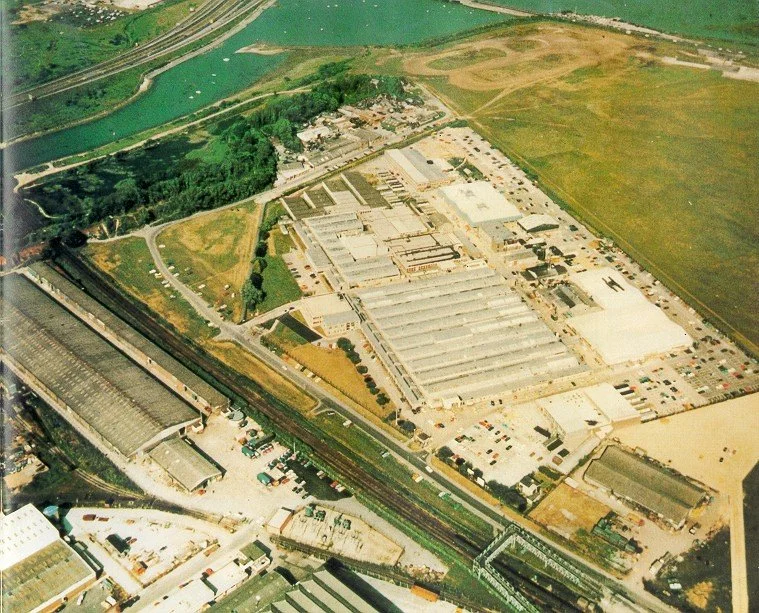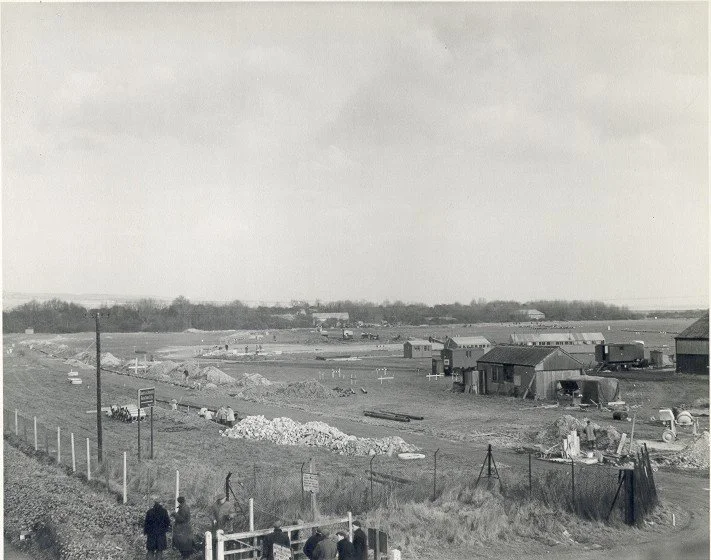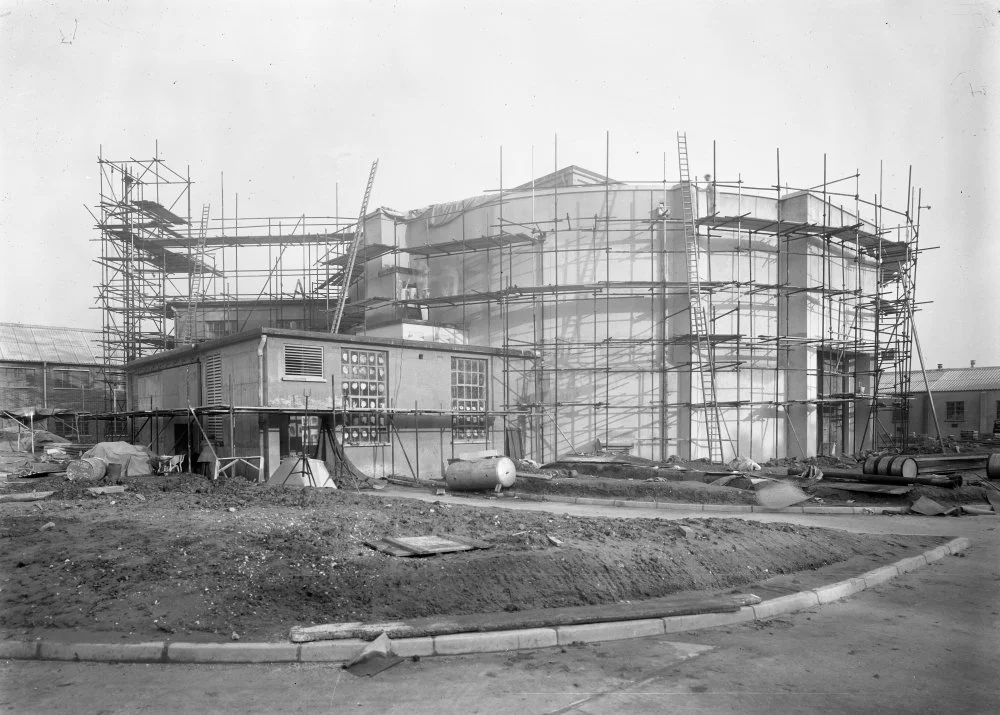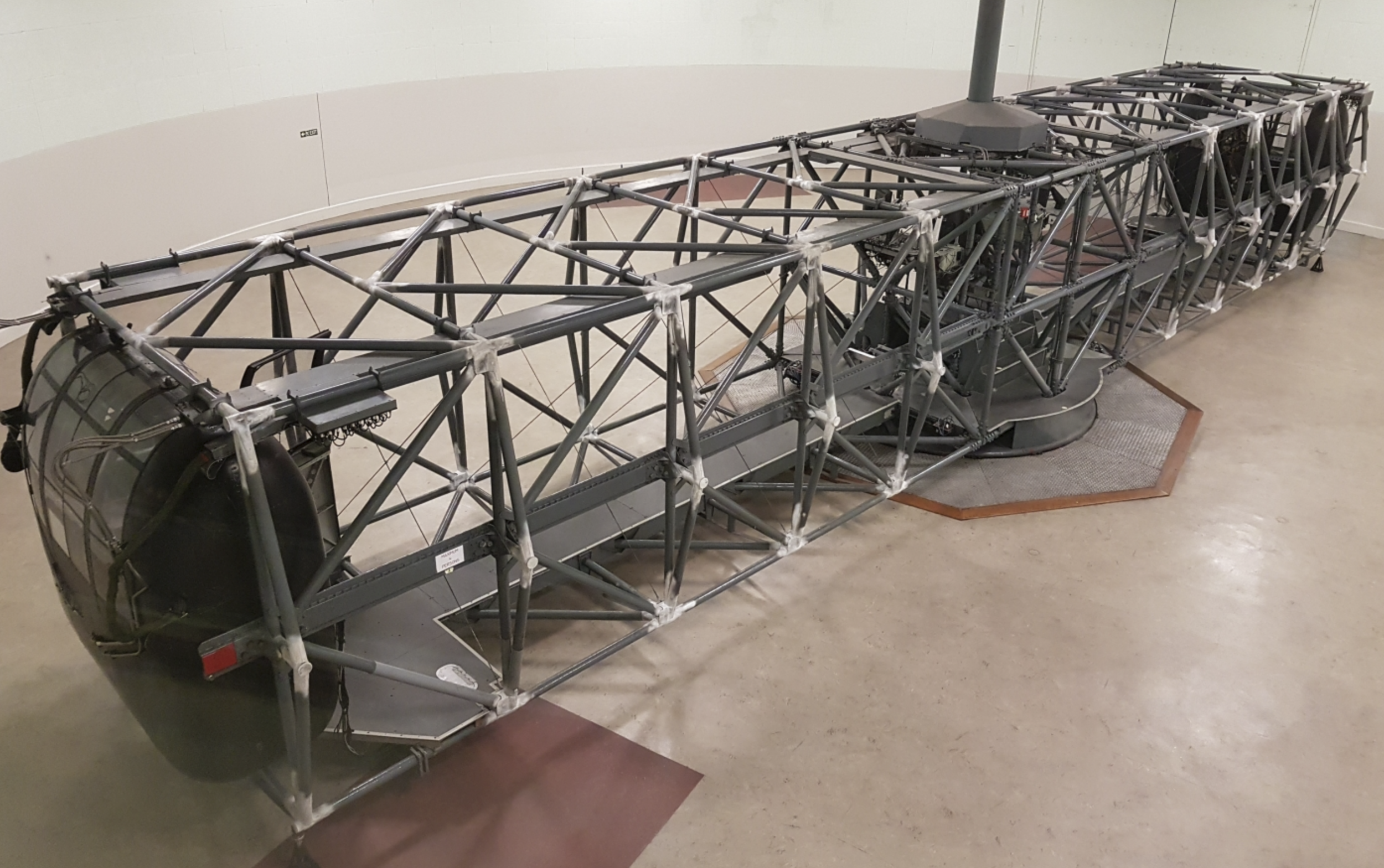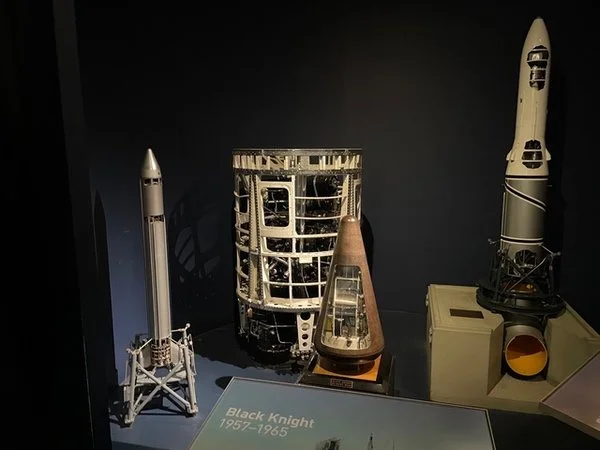70 Years Shaping the Future of Space
For seven decades, the Space South Central region has been at the forefront of space innovation and technology. Between 1955 and 2025, the area built upon its existing expertise in science, aviation, maritime and defence to evolve the thriving, end-to-end space industry we have now, comprising more than 200 companies and four world-class partner universities: UCL, the University of Portsmouth, University of Southampton and University of Surrey.
This interactive timeline celebrates 70 years of space innovation across Hampshire, Surrey and the Isle of Wight, from the start of the Black Knight rocket programme in 1955 to today, and a regional space sector worth an estimated £3 billion annually, and which employs around 14,000 people.
Help us tell the story
We owe our remarkable space heritage to the dedication and expertise of hundreds of organisations and thousands of employees – past and present. If you know of any major milestones we’ve missed or have details that could enrich our timeline, we’d love to hear from you.
Or perhaps you or someone you know worked on a space project in Hampshire, Surrey or the Isle of Wight, or witnessed an iconic moment firsthand? Personal stories bring history to life, so if you’d like to share yours, please get in touch.
Space Heritage Timeline
1955
Isle of Wight company starts work on Black Knight
Saunders Roe, an Isle of Wight aerospace and marine engineering company, is awarded the contract to develop Black Knight – the UK's first substantial liquid-fuelled ballistic rocket – by the UK Government.
The Government wanted to develop the UK’s rocketry experience as part of expensive and ambitious plans to develop a large ballistic missile, Blue Streak. The Black Knight project would grow expertise in fields such as guidance, instrumentation, steering by the use of gimballed engines, and general hands-on experience.
Working with The Royal Aircraft Establishment in Farnborough, Hampshire, and the Rocket Propulsion Department (RPD) at Westcott, Buckinghamshire, Saunders Roe’s facilities in East Cowes became important sites for the development and ground testing of the Black Knight, with more than 20 iterations built on the Isle of Wight.
Between 1958 and 1965, a total of 22 Black Knight rockets were launched, and led to future projects Black Arrow and Black Prince.
While ultimately discontinued (the Treasury ceased funding in the 60s), the Black Knight programme demonstrated the technical capabilities of British aerospace engineering and laid the groundwork for future space endeavours.
GEC establishes electronics factory at Broad Oak, Portsmouth
Situated by Portsmouth Airfield, which operated as an airport between 1931 and 1973, Broad Oak went on to be home to many big names in aerospace. The site was later home to Marconi Space and Defence Systems (also known as GEC Marconi), after GEC acquired English Electric and its subsidiaries in 1968. Today, BAE Systems and Airbus Defence & Space have bases on the site.
Marconis links to the Space South Central region go back to the 1890s, when Guglielmo Marconi conducted wireless experiments on the Isle of Wight. He set up equipment at the Royal Needles Hotel in Alum Bay and successfully communicated with ferry boats and the mainland. These early experiments were crucial in demonstrating the potential of wireless communication.
Farnborough Centrifuge makes safe high-G force testing possible
Opened in 1955, the Farnborough Centrifuge (or the Farnborough Man-Carrying Centrifuge to use its official name) was the first machine in Britain that was able to test human subjects and their equipment under the effects of high-G flight, without exposing them to the potentially fatal risk of actual test flights.
Operating from 1955 to 2019, Farnborough Centrifuge proved to be a critical asset for the UK space and defence industries and was used by international organisations such as NASA. Largely unchanged since the 1950s, may be the oldest operational human centrifuge in the world: its longevity is testament to the standard of British engineering at the time.
The centrifuge was designed by the Air Ministry with its main features finalised in 1947. The main contract was placed with M B Wild and Co Ltd, the tube structure of the arm was fabricated by Air Service Training Ltd, the gondolas were made by M L Aviation Ltd, and the electrical power and the control system were made by the General Electric Company Ltd.
Construction took place between 1951 and 1955 at a total cost of £350,000. The first centrifuge run took place on 18 April 1955 and the facility was formally opened by Lord Thurso on 17 May 1955.
Image credit: farnboroughcentrifuge.org.uk
1956
Skylark gets the go-head
Working towards its goal of the Blue Streak missile, the UK Government agreed to fund a proposal from RAE, Farnborough, to develop a ‘sounding rocket’. A sub-orbital precursor to satellites and their launch vehicles, the brief was that the sounding rocket be “easy to manufacture, prepare and fire, and the total cost should be kept as low as possible.”
The result was Skylark, iterations of which would see hundreds of launches over the next 48 years and pioneering astronomical observations.
1957
Black Knight’s first test run at top secret Isle of Wight site
The first test run of Black Knight was performed at the new High Down Test Site on the Isle of Wight. High Down, near The Needles, was built and operated in secret and was later used in tests for Black Arrow.
When the British Government cut funding for the nation’s space programme in 1971, it spelt the end of rocket testing at High Down. However, the National Trust took over the site in 1975, and you can still visit.
Skylark becomes the first British rocket to reach space
On 13 November 1957, the Skylark sounding rocket launched from Woomera, a large Anglo-Australian experimental weapons range in South Australia, established shortly after WW2.
The first Skylark only carried RAE test instruments monitoring performance, but by the fourth launch, Skylark was being used for experiments by three British universities. These included Space South Central partner UCL, its first experiment being to measure atmospheric temperature, density and wind speed using grenades. The university would go on to use Skylark rockets for pioneering research in the years to come.
1958
First Black Knight launch in Australia
The first Black Knight rocket successfully launched in Woomera: a first of its kind for Britain and another step towards British satellite launch capacity.
The technology and knowledge gained from the Black Knight programme played a key role in the subsequent development of the Black Arrow programme.
1960s
NASA and US military develop spacesuits with Farnborough Centrifuge and RAE
During the 1960s, NASA, the US Airforce and US Navy joined forces with Farnborough Centrifuge and the RAE in Farnborough for the High-Altitude Flight & Spacesuit Programme.
This collaboration pioneered the design of space suits to protect astronauts from the many challenges of space travel and led to the development of water-coolant suits, which NASA later adopted for the Apollo missions.

1962
Ariel-1: the UK becomes the world’s third space-faring nation
British-American satellite, Ariel 1, launched from Cape Canaveral in April 1962, was the first international satellite and made the UK the third country to operate a satellite after the USA and the Soviet Union. The mission heralded the start of the UK’s now thriving satellite sector.
The satellite carried six experiments designed and built by British universities, four of which were from UCL. The aim was to expand knowledge of the ionosphere and of sun-ionosphere relationships and Ariel-1 made the first spectroscopic X-ray observations of solar flares.
Image credit: ???
1964
Black Arrow rocket gets the go-ahead
Building on the success of Black Knight, Black Arrow originated from an RAE proposal for the government to fund development of a rocket capable of placing a 317-pound (144 kg) payload into low Earth orbit to test systems designed for larger spacecraft.
The programme was authorised by Conservative Aviation Minister Julian Amery in 1964 and Black Arrow was built and tested on the Isle of Wight by Saunders Roe (which merged into Westland Aircraft that year), with a Bristol Siddeley rocket engine.
Like Black Knight, Black Arrow was tested at High Down, Isle of Wight.
1965
The final Black Knight launch
The last Black Knight rocket launch in Woomera, Australia, also brought to an end the joint UK/USA/Australia programmes Dazzle and Gaslight, which successfully used Black Knight to study re-entry phenomena and re-entry head design. Further projects were considered, but it was decided that Black Knight did not have enough speed for the experiments planned.
1966
UCL’s opens one of UK’s first university space science departments
UCL was one of the first universities in the world to become involved in making scientific observations in space, and in 1966 it opened its Mullard Space Science Laboratory (MSSL) near Dorking, Surrey.
MSSL is now the UK's largest university space research group and a world-leader in space research and engineering, participating in more than 35 satellite missions and over 200 rocket experiments.
It offers state-of-the-art test facilities for ground and space-based technology and the rare capability of designing, building and testing instruments and other spacecraft systems on site. MSSL’s research covers all aspects of space, from understanding the Sun and its interaction with planets, to galaxies and the matter that makes up the universe.
Hampshire’s RAF Oakhanger becomes nerve centre for military satellite communications
RAF Oakhanger, near Bordon, Hampshire, has played an important role in military communications since 1966, now supporting the Skynet 5 constellation and the United States Space Force's Satellite Control Network.
The site was managed by the Royal Air Force until 2003 when it was taken over by Paradigm Secure Communications, followed by Airbus Defence and Space (2013 – 2024) and Babcock International (2024 – present).
1967
Skylark takes flight
The first Skylark rocket launched from Woomera, Australia in 1967. Skylark went on to enable around 440 launches, making it one of the world’s longest-running rocket programmes, helping our understanding of solar physics and atmospheric dynamics.
Space South Central partners UCL and the University of Southampton were among the British universities involved with the launch, which used MSSL hardware.
1958
LOCATION
Woomera, Australia
ORGANISATION
Saunders Roe; Royal Aircraft Establishment; the Rocket Propulsion Department (RPD) at Westcott, Buckinghamshire
BACKGROUND
The technology and knowledge acquired from the Black Knight programme played a significant role in the development of the Black Arrow programme.
RELATED PROJECTS
Black Arrow
Black Knight rocket successfully launched in Woomera, South Australia: a first of its kind for Britain and the first step towards British satellite launch capacity.

1962
LOCATION
Dorking, Surrey
ORGANISATION
NASA; British National Committee for Space Research; UCL (among other British universities)
BACKGROUND
The leading figure behind the UCL experiments was Professor Harrie Massey. Professor Massey joined UCL in 1938 and was made head of the UCL Physics department in 1950. He remained its head after the department was merged with Astronomy in 1973 and retired in 1975.
Ariel 1 - the first British-American satellite - launched, making the United Kingdom the third country to operate a satellite, after the USA and the Soviet Union.
The satellite carried six scientific experiments designed and built by British space scientists. Four of these six experiments were designed and built by Space South Central university partner UCL.
1962
LOCATION
Isle of Wight
ORGANISATION
Saunders Roe; Royal Aircraft Establishment; the Rocket Propulsion Department (RPD) at Westcott, Buckinghamshire
BACKGROUND
Closed in the 70s, the High Down site is now owned by the National Trust.
RELATED PROJECTS
Black Arrow
The first test run of Black Knight was performed at the new High Down Test Site on the Isle of Wight. High Down, near The Needles, was built and operated in secret.
1966
LOCATION
Dorking, Surrey
ORGANISATION
UCL / MSSL / Mullard Ltd
BACKGROUND
The 'official' opening ceremony was in 1967. MSSL is a world-leading space science laboratory. Based in the Surrey Hills near Dorking, MSSL has been developing cutting-edge space research and space technology for over 50 years. Its research covers all aspects of space, from understanding the Sun and its interaction with the planets, to understanding galaxies and the matter that makes up the universe. At MSSL, cutting edge space hardware is built and operated for multinational space missions. It also offers state-of-the-art test facilities for ground and space-based technology. MSSL is UCL's Department of Space and Climate Physics. The laboratory is located in a Victorian mansion, previously used as a school, set in 30 acres of land in the Surrey Hills, 35 miles from London, with spectacular views across the Surrey and Sussex countryside. MSSL offers the unique capability of designing, building and testing instruments and other spacecraft systems on site. Seven research groups supported by specialist engineers conduct its scientific research. Staff also teach space-related courses at UCL.
RELATED PROJECTS
Skylark; OSO 4;
